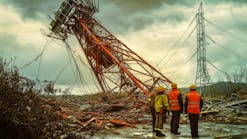Sandia National Laboratories and CSolPower Using Rocks to Develop Thermal Energy Storage System
Sandia National Laboratories and New Mexico-based CSolPower are joining hands to develop a thermal energy storage system from renewable sources to transition to zero-carbon solar and wind energy for electricity generation.
“You need to have energy storage and dispatchable power when renewable energy is unavailable or when there’s a large spike in demand from the grid,” said Luke McLaughlin, a mechanical engineer at Sandia working on thermal energy storage. “With this project, we’re integrating renewable energy sources into an electrically charged thermal energy storage system, while our aim is to develop the technology and take it to a place where you can use wind and photovoltaic energy sources to charge the system.”
The system consists of rocks in a bed to be heated or cooled with air to store thermal energy. According to Nathan Schroeder, a Sandia mechanical engineer, gravel from landscaping companies can be used for the system without washing or preparation.
“One of the advantages of thermal energy storage in rocks is that it can be built anywhere,” said Walter Gerstle, who co-founded CSolPower in Albuquerque in 2019. “It can be commodified, doesn’t require extensive permitting, and can be implemented more quickly and economically than other approaches.”
While Sandia has designed a small 100 kWh test rig to test the rock bed’s performance at the National Solar Thermal Test Facility, photovoltaic panel installation is under process, and updates are given to demonstrate the bed’s ability to charge using an intermittent energy source. Prototype testing will continue until June 2024.
“Reducing the cost of this thermal energy storage system, or energy storage systems in general, increases the potential for deploying these systems in industry, and it increases the likelihood of adopting renewable energy,” Schroeder added.
CSolPower’s technology focuses on long-duration energy storage, and during testing, the bed was charged with air at temperatures of 500 degrees Celsius, or greater than 900 degrees Fahrenheit, and the system maintained the temperature for up to 20 hours. The technology reduces dependence on fossil fuel heat sources.
CSolPower aims to prepare its technology for utility-scale storage and initiate small-scale implementation. Many greenhouses in northern New Mexico will be able to use the rock bed for thermal energy storage, provided the current phase of testing is successful.
While the Technology Readiness Gross Receipts initiative is financing this phase of the project, Sandia’s Technology and Economic Development Department is helping administer the tax-funded program, which allows eligible New Mexico businesses to work with scientists and engineers from Sandia and Los Alamos national laboratories and get their inventions ready for the commercial market.





